Watch this video to learn how to change a mold in a Magma Engineering Bullet Caster.
 |  |  | |
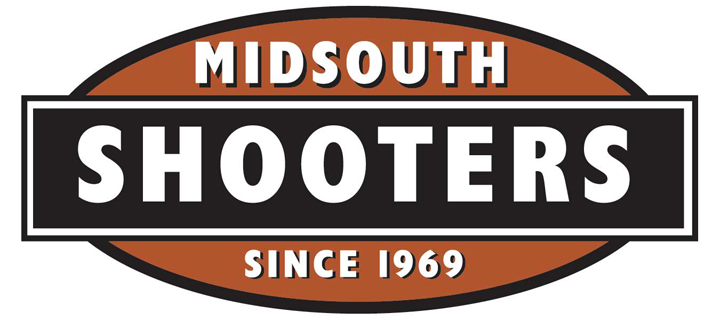 |
 |  |  | |
 |
 Basic Equipment: Getting What You Need
Basic Equipment: Getting What You Need
One way to enter the water, as it were, is to get acquainted with other reloaders and see what they use and don’t use, and quiz them on the whys and wherefors of their equipment. Ask a friend if you can try his equipment. This way you can get a feel for the tools, how they work, and begin to come to some decisions regarding what you might like and what you find difficult or unnecessary.
The reloading bench is the foundation of your work area. There is no standardized design, and it may well serve a dual purpose as a kitchen counter on which reloading tools are temporarily mounted. If you must use a temporary surface of this type, your reloading press and sizer/lubricator should be permanently mounted on a solid 2×6 or heavier plank that can be securely attached to the counter top with C-clamps. The counter must have a solid top since the levering force exerted on the bullet sizer and the loading press can pull the counter top loose.
If you have the space, a solid desk or workbench arrangement is best. General requirements are that it have enough weight or be attached to the floor so that it will not rock back and forth in use. It should be solid enough that the top will not pry loose under the stress of cartridge and bullet sizing. Whether or not it is to be a thing of beauty depends on how much of the public will view it, in a dining room or corner of an apartment, or if it will stay in a garage or basement area. If ammunition and powder are to be stored in the same area, the bench should in a spot that is climate controlled. It should have at least one large drawer and be close to shelving or cabinets where bullets, primers, powder, cases, loading manuals, etc., can be located within easy reach. The top should be smooth and free of cracks, holes and splinters.
While you can build a bench of your own design out of whatever scrap lumber you have at hand, an easier way is to use plans from the National Reloading Manufacturers Association. (That organization is now inactive, but you can go to Chapter 18 where your editor revisits those plans, and actually gives you the complete plans right in this book.) If you’re handy with tools, you can buy all the components from your local lumber yard or building materials store for around $100 and assemble it yourself.
The NRMA bench is heavy, solid and able to support all manner of tools and presses, The plans have been around for more than 20 years, and thousands of reloaders have built them. The plans call for heavy dimension lumber and plywood, so build it where you will use it.
Once you have your bench, the next step is to choose the basic reloading tool, the heart of your operation–the press. Before parting with any money, it is best to start with the maximum amount of experience and knowledge. This returns to the above-mentioned issues of speed, economy and precision. Your first question should be: Am I going to load for pistol, rifle or both? Shotshell reloading requires it’s own special loading equipment and will be dealt with later. If the answer is to reload both handgun and rifle cartridges, then you will want to buy a press that is intended for rifle cartridges that will do handgun ammunition as well.
Economy Versus Speed
The most basic type of bench-mounted loading press is the O-frame or C-frame press, so called because the frames are shaped like these letters. Both are rugged and simple. They are also referred to as single-stage presses since they mount a single loading die in the top. Each operation–decapping and sizing, neck expanding and bullet seating–requires that the die be unscrewed and the next die screwed in place for each operation. Most reloaders perform each operation in batches, so you don’t spend all your time changing dies. The manufacturers promise a production rate of about 100 finished rounds per hour.
Similar to these are the arbor presses, which mount a single die in the bottom. Arbor presses require a special straight-line type of die that is not compatible with the top-mounted variety used in standard presses. The price range and speed are about the same. Arbor presses are small and compact, and have the advantage of being on a flat base and not requiring permanent bench mounting. This makes them handy to take to the range where ammunition can be fabricated while you shoot. In addition to instant gratification, this portability saves time and material put into long runs of test ammunition.
More expensive and faster are the turret and H-frame machines that allow a full three-die set to be mounted along with a powder measure. All dies are in place and the cartridge is moved from one station to the next, or the turret is rotated to bring the next die into position. Production is estimated at 200 rounds per hour, but the price is higher.
Near the top end, short of buying an ammunition factory, are the progressive loaders. These are semi-automated machines with feed tubes and hoppers that are filled with cases, bullets, primers and powder. Once the various feeding devices are filled, the operator simply pulls a handle and manually feeds one component, usually bullets or cases, inserting them into a slot on a revolving plate, and the machine does the rest, moving the case from station to station. The finished rounds come popping out at the end of a full plate rotation cycle and are collected in a convenient bin. Production rates are from about 500 rounds per hour to 1200. Plan to do a lot of shooting if you invest in one of these. You should also plan to have plenty of space since a progressive stands better than 2 feet high and weighs up to 50 pounds.
Speed Versus Precision
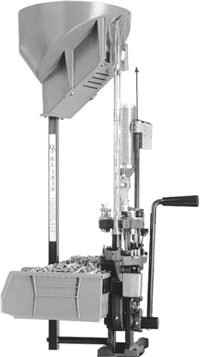 The Dillon RL 1050 will load 1000 to 1200 rounds per hour. A progressive loader of this sort represents a sizable investment and is definitely not for beginners. |
All of the presses mentioned will produce high quality, precision ammunition, or at least as precise as you make it, since quality control is up to the operator. Careful adjustment, precise measurement, and inspecting every step in production are your job, and if you do it well, the results will show in the finished product.
Progressive loaders are designed more for speed than precision. In the case of handgun ammunition where benchrest accuracy is not expected, they are the best investment for a shooter who really burns a lot of ammunition.
These are also purchased by clubs, police departments and professional reloaders who sell their ammunition. While progressives churn out tremendous quantities of ammunition, they generally require a fairly complicated set-up period, and if there is a change of caliber of ammunition, this can mean a different set of feed tubes and plates as well as dies. Because they are complicated, progressives require more tinkering and cleaning to keep them running smoothly. Automation of the process means you depend on the machine to do it right every time. That doesn’t always happen.
Precision Versus Economy
As mentioned above, precision and economy lie mainly with the single-die and turret/H-frame (multi-station) machines. Progressives only pay when there is a demand for high-volume production of one caliber at a time. The price differential between the single-stage and turret/multi-station machines is close enough that it is probably worth the extra money to invest in the latter if you are going to do more than a very modest amount of reloading. They have the advantage of holding a full die set and a powder measure.
This means the dies are seated and adjusted once, for the most part, unless you are reloading a number of calibers. The production edge will be noticed as the amount of ammunition you make increases. For a shooter reloading a single caliber––mainly for hunting––someone who does not do a lot of practice and may assemble no more than 200 to 2000 rounds a year––the best buy would be the simple, reliable O- or C-frame machine. It will do the job.
 As firearms technology has advanced, guns have become more powerful and sophisticated. Cartridge case design has had to keep pace with this evolution. In reality, cartridges are often designed first and then guns are designed or adapted to fit them.
As firearms technology has advanced, guns have become more powerful and sophisticated. Cartridge case design has had to keep pace with this evolution. In reality, cartridges are often designed first and then guns are designed or adapted to fit them.
The basic design of contemporary centerfire cartridge cases include some of the following variations:
1) Straight walled rimmed. These date from the 19th century. They include the 32 and 38 S&W revolver cartridges, the 45 Long Colt and the 45-70 rifle. They also include modern cartridges such as the 38 Special, 357 Magnum and 44 Magnum revolver cartridges.
2) Straight-tapered. An effort to improve extraction led to this design. It is now nearly obsolete, the 38-55 being the only current survivor.
3) Rimmed bottleneck. These include late 19th century smokeless powder cartridges such as the 30-30 and 30-40 , 303 British, and .22 Hornet.
4) Semi-rimmed straight. These include currently made 32 Auto and 38 Super Automatic cartridges. The semi-rimmed design was to facilitate feeding through box magazines, with a slight rim to keep the cartridge from entering the chamber.
5) Semi-rimless bottleneck. Now rare, the 220 Swift is an example.
6) Rimless-straight. A common example is the 45 Colt automatic.
7) Rimless-tapered. These incude the 9mm Luger and 30 M-1 carbine.
8) Rimless-bottleneck. This is an improved smokeless design from the 1890's. Most modern rifle cartridges use this design.
9) Rimless belted. This design is used only on high-pressure magnum rifle cartridges such as the 458 Winchester Magnum.
10) Rebated head. This case features a rimless head smaller than the body permitting a slightly increased case capacity. Examples include the 284 Winchester rifle and 41 and 50 Action Express cartridges.
When buying cartridge cases for reloading, the first thing you want to be sure of is that you have the right one for your gun. Most civilian guns are marked on the barrel regarding the ammunition to be used in it. Military arms, however, are not, or at least not very often. When in doubt, check it out with a good gunsmith. If there is no question about caliber, you want to get new or once-fired cases from a reputable source — marked with the headstamp of a known manufacturer and not from the “Royal Elbonian Arsenal.” Military cases referred to collectively as “brass” are often sold at bargain prices.

Sometimes they are a bargain if they are fired only once and are not battered up by being run through a machine gun. The best military ammunition bargains are loaded ammunition. That way you get to shoot it first. Military cases do, however, have a few drawbacks. Assuming they are not Berdan primed, they may have been fired with corrosive primers. A wash in hot water and detergent will remove corrosive primer salts after firing.
The main problem with military cases is the crimp holding in the primer. Removing this crimp means a heavy-duty decapping pin and either chamfering the primer pocket or removing the crimp with a primer-pocket swage die, as explained in the chapter “Reloading Rifle Cartridges.”
With the exception of new unfired cases in the box, all cases should be given an initial inspection. Bulk, once-fired, military and commercial cases may have loose debris including primers (live and dead) rattling around inside them that should be removed. Cases should be sorted by manufacturer and kept in separate containers. Although the dimensions for all cases of a particular caliber are basically the same, internal dimensions (caused by varying wall thickness and head thickness) and the size of the vent in the primer pocket will vary. This will yield different pressures and velocities.
Mixed cases will thus give less accurate shooting. Varying pressures can be dangerous if the load you are using is a maximum one. If for instance this load is worked up using one type of case with a fairly thin wall and thus a comparatively large internal capacity, in combination with a small vent, the internal pressure will be significantly lower than one with a thicker wall, smaller capacity and larger vent.
Beyond separation by manufacturer, cases should be checked for splits in the neck, heavy corrosion and any anomalies indicating pressure or headspace problems or serious battering in the firing process, such as seriously damaged necks, that would render them unreloadable. Oil, grease, grit and dirt should be removed before reloading.
The headstamp markings of cartridge cases contain valuable information that will prove useful in buying ammunition and brass cases. Commercial manufacturers mark their cases with their name or trade mark, the caliber of the cartridge and the name of the cartridge, e.g., WW 45-70 Govt. This tells you it was made by Winchester/Western and it is the 45-70 Government cartridge originally made for the 45 caliber Springfield army rifle.
Markings on cartridge cases made for the military contain similar information, plus a two-digit date of manufacture.
L C is the Lake City Ordnance Plant. W R A is Winchester Repeating Arms Company. R A is Remington Arms Company. A stamp of R A 79 indicates the cartridge was made by Remington in 1979. American military cases are not marked by caliber. Early cartridges made in the Frankford Arsenal in Philadelphia were marked F or FA 3 05. This indicates the source and the month of manufacture (March) and the year 1905.
This is not ammunition you would want to shoot, especially if it shows any sign of corrosion. American-made military ammunition used corrosive priming into the early 1950's. Different arsenals switched to non-corrosive priming at different times with all being changed over by 1954. Non-corrosive priming will require less cleaning of your gun.

Most shooters like to keep their cases shiny and bright. They look better and are easier to find on the ground. Shined cases are less likely to collect dirt and grit and can be easily checked for damage caused by corrosion. Dark cases hide flaws that may run deep.
There are two basic methods of case cleaning. The first is wet cleaning. This uses a concentrated, acid-based cleaner that is mixed with water. This must be done in a glass, plastic or stainless-steel pan. Warming the pan, with the cases in the mixture, on the stove speeds the process. The cleaned cases must be rinsed to remove all residue and oven dried on “warm.” Too much heat can ruin the heat treatment of the cases. Cases should be decapped before wet cleaning.
Dry cleaning is tumbling the cases in an abrasive cleaning media made of ground corn cobs or ground walnut shells. This requires a motor-driven tumbler or spinner-type tool into which the cases and media are put for cleaning. The cleaned cases must be wiped free of dust, and any media trapped inside must be removed.
“Store in a cool dry place” is good advice for keeping about anything, but this isn't always possible. Depending on one's paranoia and/or notion of thrift, the decision may be made to buy a large quantity of cases. Sometimes quantity simply accumulates in the form of various loadings, always expanding with the addition of new guns to a shooting battery. Ultimately the questions arise: how long will this stuff last (both cases and finished ammunition) and how do I take care of it?
In answer to question one, the shelf life of modern ammunition (both commercial and good handloads) is virtually indefinite if kept under ideal conditions — sealed, cool and dry. Most of us don't have this kind of storage. Experts have preached since time immemorial the avoidance of heat and damp when storing. Actually, heat and damp by themselves don't do all that much damage to quality ammunition. Heat does drive off volatiles in lubricants and exposed propellent-powders and to a degree accelerates decomposition in smokeless powders.
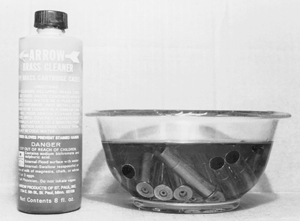
Heat and damp together are most injurious because water absorbs pollutants and heat accelerates chemical reactions between these pollutants and ammunition. The triple threat in airborne pollution consists of acids, ammonia, and sulfur compounds. All occur naturally in the atmosphere in addition to being man-made pollutants. They are also found in a variety of household products. Salts, through direct contamination, are a fourth hazard. Pinpointing the exact reason why a particular batch of ammunition went bad is a mystery to be solved by an expert metallurgist-detective through chemical analysis and examination of cartridge surfaces with a scanning electron microscope.
I have often heard it said that certain metals “crystalize” and become brittle with age. I put this question to Professor Bryan Wilde – a metallurgist and director of the Fontana Corrosion Center at The Ohio State University. He assured me this was not the case. Cartridge brass has a crystalline structure.
When exposed to pollutants in the atmosphere, notably ammonia, a breakdown of the alloy begins as ammonia dissolves the copper. Acids in the atmosphere dissolve the zinc in a process known as “dezincification.” In areas where the metal is stressed – case necks, shoulders and crimps – the crystal edges are farther apart, thus speeding the breakdown in a process known as “season cracking.”
Season cracking begins as tarnish, gradually turning into deep corrosion which often follows the edges of the crystals, giving the surface a frosted appearance, leading to the impression the metal is changing its structure. This phenomenon was first recorded in nineteenth-century ammunition used by the British in India, where it was exposed to the ammonia-rich fumes of cow dung and urine in a hot, humid climate.
Salts occur in perspiration and are a problem mainly because they are hygroscopic – they draw and hold water which combines with the salt to corrode metals the wet salt mixture contacts. Sulfur, notably sulfur dioxide (SO2), causes a tarnish when it combines with lead and copper to form sulfides. When SO2 combines with water (H2O) the result is sulfurous acid (H2SO3). Lead and lead alloy bullets are subject to damage mainly from acids. These attack lead, causing a hard white crust to form. If the bullet can be hand-turned in the case there is not a hermetically tight seal and sooner or later moisture will enter.
Manufacturers continue to come up with better priming, powder, lubricants, case materials, sealants, and packaging. What you buy represents the manufacturer's state of the art combined with his sense of economy at the time the product was made.
Plating cases with nickel and plating or jacketing bullets with copper inhibits corrosion by acid. Non-hygroscopic bullet lubricants keep moisture away from bullets and out of case interiors. Paper boxes absorb moisture but are no problem if kept dry. Those that contain high levels of acid residues should be disposed of and the cartridges repacked in plastic boxes which are chemically inert and if sealed, keep most moisture out. Therefore, if the cases/ammunition are in good shape when stored, and if kept dry and cool, they will remain in good condition for decades.
A second problem that still crops up is brittle brass. After cartridge brass is formed it gets a final heat treatment called “stress relief.” This process involves less heat than annealing and is done to bring the brass to the optimum degree of springiness. Occasionally a batch will get through that is improperly treated.
It will perform fine when new, but after ten or more years, the brass will have returned to its original brittle state. This is exacerbated by the process of firing and resizing. Cases will split and sometimes burst. Any corrosion taking place will hasten this process. One advantage of the old gilding-metal cases is that they were less subject to corrosion and stress changes because they were softer.
Beyond cool and dry there isn't much to be added regarding shelf-storage. For the longest run, the best means is a military ammunition can with a rubber gasket along with a fresh packet of desiccant, closed on a dry day and opened as infrequently as possible. If ammunition is stored in a can or tightly sealed cardboard container, don't break the seals (letting in pollutants) to have a look.
Second-floor rooms are perhaps the best for shelf-stored ammunition, avoiding attic heat and basement damp. Cartridges should be stored away from cleaning products containing ammonia, bleaches, or acids. If it must be stored in a basement, run a dehumidifier and keep ammunition off the floor. It is a good idea to make timely checks of shelf-stored cartridges in non-sealed boxes – twice a year is fine – to inspect for case tarnish or a haze of white corrosion forming on lead bullets.
To the above might be added a list of dumb things not to do. Slathering a gun with Hoppe's No. 9 may do well to keep it from rust, but if this is the one kept for home defense the ammonia in No. 9 spreading onto the cartridges therein will eat right into them. The same is true for any ammonia-bearing solvent cleaner. A rust inhibitor such as WD-40 spray may work preservative magic, but WD-40 is designed to penetrate and will do so in the seams between primers and cases, eventually working into the priming compound and neutralizing it. Leaving cartridges in leather belt loops may look nifty, but if the leather has residual salts or acids in it these will eat into the metal, etching a ring which adds nothing to the looks or strength of the cartridge case.
Lastly, it should not be forgotten that cartridges are interesting. People can't keep their sweaty hands off them. Ask any collector how often he wipes down his collection after “showing” it to friends. Two suggestions passed to me by collectors are treating specimens with a light coat of rust inhibiting grease or liquid car wax of the Rain-Dance variety as the best defense against repeated attacks of finger-borne corrosion. Like the guy at the gas station used to say: “Rust never sleeps.”
This article is an excerpt from the ABCs of Reloading, 9th Edition.
 As you may remember, GOA had alerted you last month to press reports indicating that the NRA might endorse Reid. Followers of the Wall Street Journal read on July 2 that:
As you may remember, GOA had alerted you last month to press reports indicating that the NRA might endorse Reid. Followers of the Wall Street Journal read on July 2 that:
The chief lobbyist for the National Rifle Association made an interesting admission to The Weekly Standard following a Wednesday report by RedState.com that the powerful gun lobby might back Senate Majority Leader Harry Reid in his general election battle against Republican Sharron Angle.
It's not that they might endorse Reid — because they might, said chief lobbyist Chris Cox — but that the issue doesn't appear to be as much about the records of Reid and Angle, but rather the specter of a Senate run by either Democratic Sens. Dick Durbin of Illinois or New York Sen. Chuck Schumer.
GOA asked you to contact the NRA and to urge them NOT TO ENDORSE Reid. Well, as of last week, the NRA officially announced that they would not endorse him!
This is extremely good news, because it makes it more likely that gun owners in Nevada will now be able to make a more informed decision in November. Now, if we can just encourage the NRA to take the next step and endorse the pro-gun Sharron Angle! Read more
Source: Gun Owners of America
Recommended AR-15 resources for gun owners:
New! The Gun Digest Book of the AR-15 Vol. III
The Gun Digest Book of the AR-15 Vol. I
The Gun Digest Book of the AR-15 Vol. II
Gunsmithing the AR-15, How to Maintain, Repair & Accessorize
Find more gun books, DVDs and downloads at gundigeststore.com.
 Monday's 20-16 vote fell one short of the majority needed, but the Senate will reconsider the measure Tuesday.
Monday's 20-16 vote fell one short of the majority needed, but the Senate will reconsider the measure Tuesday.
The bill, AB1934, was introduced after a series of demonstrations by gun-rights organizations during which they encouraged participants to openly carry unloaded weapons. California law lets gun owners carry a rifle or handgun in a holster if it is not loaded.
The legislation would make it a misdemeanor to openly carry a handgun in any public place.
Democratic Sen. Mark DeSaulnier of Concord, who carried the bill in the Senate, said people often call police when they see weapons in public, not knowing whether they are loaded.
“I do not want to take weapons away from law-abiding citizens,” he said. “The Supreme Court has said we can put reasonable controls over handguns, and that's what this is.” Read more
Source: mercurynews.com
Recommended books and DVDs for gun owners:
 Gun Digest 2011, The World's Greatest Gun Book, 65th Edition
Gun Digest 2011, The World's Greatest Gun Book, 65th Edition
Gun Digest 1944-2009 3-DVD Set
Massad Ayoob's Greatest Handguns of the World
Shop more at gundigeststore.com
 Agreeing with the position of the NRA and the firearms industry, the agency explained in a news release that it “does not have the legal authority to regulate this type of product under the Toxic Substances Control Act (TSCA).” Further crushing the hopes of anti-gun and anti-hunting activists, the release added: “nor is the agency seeking such authority.”
Agreeing with the position of the NRA and the firearms industry, the agency explained in a news release that it “does not have the legal authority to regulate this type of product under the Toxic Substances Control Act (TSCA).” Further crushing the hopes of anti-gun and anti-hunting activists, the release added: “nor is the agency seeking such authority.”
“It’s outrageous that this petition even went this far,” said Chris W. Cox, NRA-ILA Executive Director. “We applaud the EPA for its understanding of the law and its common sense in this situation — both of which were totally missing in the petition filed by these extreme anti-gun and anti-hunting groups.” Read more
Source: NRA-ILA
Resources for reloading:
 Cartridges of the World, A Complete and Illustrated Reference for Over 1,500 Cartridges
Cartridges of the World, A Complete and Illustrated Reference for Over 1,500 Cartridges
The ABC's of Reloading, The Definitive Guide for Novice to Expert, 8th Edition
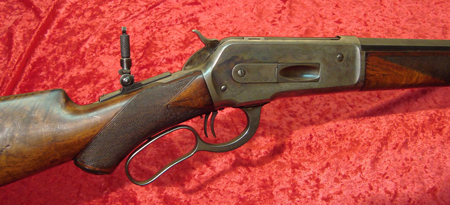
by Mark Kakkuri
James D. Julia was nervous. It was October 2008 and the firearms auctioneer from Fairfield, Maine, was listening to news reports warning of a possible collapse in world financial markets. Earlier that year, in March, his firearms auction business enjoyed a $12.7 million gross for a single auction, the largest ever, anywhere.
Now, it seemed like the financial world was unraveling and he was about to open another firearms auction. Julia feared that buyers wouldn’t be buying and the auction wouldn’t be successful. “Nobody knew it, but I was sweating bullets,” he says. Well known for their high quality firearms auctions, the James D. Julia Auctioneers started the October 2008 auction featuring a rare Colt Walker pistol with an estimated selling price between $500,000 and $1,000,000. Julia wondered how it would it fare in an economy that seemed to be on the brink of disaster. It sold for $920,000, setting a world record for the most expensive single firearm sold at auction.
Over the 40 years that Julia has been in the auction business, he’s sold over $130 million worth of firearms and military goods. In the past five years his auction company has averaged $15,000 per lot sold—six to eight times the industry average. The day after the record Colt Walker sale, the stock market lost 10 percent of its value. In general, economic times are indeed difficult— “it’s about as challenging a time you could ask for in recent years,” he says—but points to one simple reason for success: “There’s always a bunch of guys who will fight for a special item; they are passionate in their interest and desire. A true collector is not an investor in his things; they love and understand those things; that’s what drives them.”
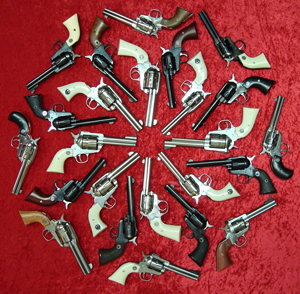 |
Manufacturers of modern firearms, especially AR-15 rifles and concealable handguns—have also enjoyed record sales over the last couple of years. Julia, however, says sales in the firearms industry has nothing to do with the success of the auction industry. “Thank God for the fear mongers who purchased Glocks and such,” he says, “but it’s a totally different guy who buys collector pieces from gun auctions.”
Despite the declining economy, Scott Weber, owner of Gunrunner Online Firearms Auctions in Burton, Ohio, also saw significant success in his firearms auction business last year but sees a closer connection between the political climate, general firearms sales, and sales from firearms auctions. Weber says 2009 was Gunrunner’s highest grossing year of their 10 years of auctioneering, “and we thank Mr. Obama for that!” Gunrunner sells 5,000 guns a year in online auctions and Weber says they’re on their way to doubling the revenue of 2009. “No recession here!”
In 2009, Kramer Sales, a firearms auctioneer based in Prairie du Chien, Wisc., sold around 1,500 antique and modern firearms. Owner Curt Kramer says that while they’re a smaller outfit, this is about double what they did in 2008. “We sold some really interesting firearms at auction this past year, from a .50 caliber WWII British Boyes anti-tank rifle to some great deluxe Winchesters, a Henry Rifle, and just about everything in between.”
By contrast, James D. Julia Auctioneers will sell around 800 guns generating from $8.5 million to $13 million. According to Julia, his nearest competitor will sell 3,800 guns to generate about $3 million and conduct 20 to 30 auctions a year. Julia conducts nine auctions a year. “We don’t aim for quantity but quality,” he says.
Whether passionate collectors or political concerns are driving the firearms auction industry, the success has brought its share of surprises to the auctioneers.
“Our staff was not ready for the amount of firearms streaming into the store,” says Weber. He says the Gunrunner employees in one load picked up over 1,000 guns and recently received another collection of 500 handguns. “All day long the guns come in the mail or by truckload—it’s like Christmas every day!” Weber says this level of business requires Gunrunner employees to work until 11 p.m. every night just processing the paperwork for the firearms. “It’s great fun,” he says, “but I am working seven days a week.”
The surprising demand for firearms has also brought a demand for ammunition. “Ammo sales has been nuts for two years,” says Kramer, particularly of ammunition in not new but not old enough or in good enough condition to be collectible. “It’s just good shooter ammo,” he says. “Further, ammo prices in the retail stores have not dropped and my buyers realize it.”
Despite the record-setting sales and its position as one of the larger firearms auction companies, Julia considered the economic downtown and prepared for the worst. “I knew a recession was coming but I didn’t know when,” he says. “Just as soon as it happened I met with my staff and told them what to expect. First I told them that we’re not going to fire anyone; instead we’re going to do more for our client. So we implemented a policy change. If the goods to sell are expensive, we’ll sell at a zero percent commission. I called it the James D. Julia ‘Stimulus Plan.’
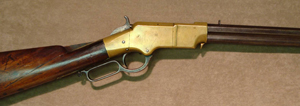 Another unique piece from a recent Kramer auction: a Civil War era Henry manufactured in 1864. |
The key was to generate an attitude not of restriction but of more service to the customer. The goals were simple: We would get more stuff to sell, get more people in the door (at 0 percent), and make life hell for our competition.” As a result, Julia says last year his company sold a lot less than the $42 million in stuff they were supposed to sell; but they are now constantly negotiating with new clients.
According to Julia, when the market drops, it just gets tougher to sell but also to get the goods to sell. “Sellers are either people who have things that have to be sold—they’re just done with their stuff—or they’re of the opportunistic group, checking to see what profit they might get out of a sale.” Most opportunistic sellers will wait in bad times, he says.
Weber says Gunrunner’s challenge is getting 350 guns a month onto their auction block with accurate descriptions. “It’s tough to research some of the firearms—we are getting some of the rarest guns in the world into our auction facility— and it takes time to get the descriptions right so that we really know what we have.”
Moreover, the company needs more physical space. In fact, Gunrunner recently purchased more business space near their current location and Weber says they may need more immediately. “We will be doing two types of auctions a month. I’ve got a new crew hired and they’ll start a new 24/7 auction in June,” he says.
Kramer brings up a host of challenges he’s facing: time required to keep up with all of the state laws, managing nationwide shipments, and Internet and phone bidding. He says keeping up with technology keeps him busy and the firearms industry is expanding much faster due to the Internet and Web-savvy buyers who are always looking for a particular gun to upgrade or fill out a collection. “I am a computer-literate guy,” he says, “but we are doing a lot of things with Internet catalogs and live Internet bidding that I never thought I would be doing.”
Julia, Kramer, and Weber all share a favorable outlook for the firearms auctions business. Weber says that 2010 looks to be Gunrunner’s greatest year by far—double the business of last year. “It’s unreal!” he says. Kramer says 2010 has been very good so far: “Our March auction was our best attended sale yet and prices were very strong on all types of firearms.”
According to Julia, the auction business, while good, is not as easy as it has been in the past. The bottom line, however, is there. The industry’s advantages, he says, are the huge pool of goods which are a magnet for buyers and the tremendous pool of financial resources which allow him to spend a lot of money advertising the auctions.
“In great times you draw people in and they fight for things,” says Julia. “In bad times, you set realistic or conservative expectations (prices), and then have something people want. With a declining economy, people are preprogrammed to be more careful when buying and the auction creates the right atmosphere to take advantage of this. Get two bidders who think ‘I’m going to save some money and get what I want’ and they’ll drive the price up.”
Mark Kakkuri is a freelance writer in Oxford, Mich.
This article appeared in the August 2, 2010 issue of Gun Digest the Magazine.
Recommended books for gun collectors:
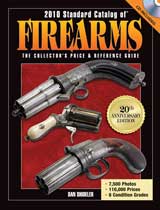 Standard Catalog of Firearms, 20th Edition.
Standard Catalog of Firearms, 20th Edition.
The Official Gun Digest Book of Guns & Prices 2010, Rifles, Pistols & Shotguns 5th Edition
Gun Digest is the source for firearms news, pricing and guns for sale. Readers benefit from in-depth editorial expert advice, show reviews and practical how-to instructions. With your Subscription, you'll also learn about threats to your Second Amendment rights. Click here to begin your subscription to Gun Digest.
– Gun show coverage!
– Varmint loads
– Gun auction listings
– Trends of values for rifles, shotguns and handguns
– Guns for sale: Extensive classified listings
Not a subscriber? Make sure you don't miss another issue! Subscribe now
Click here to read editor Kevin Michalowski's column, Gun Show Season is Here.
For the past three days I have visited with members of the Blackhawk! staff at their headquarters in Norfolk, VA. You know about Blackhawk!, the maker of some of the finest tactical gear in the world. Stuff that is built for the field by guys who have been in the field. You heard the story of how Blackhawk! founder Mike Noell, a Navy SEAL, found himself face-to-face with a landmine after a strap on his pack broke somewhere in northern Iraq. And how he promised that if he made it out alive he would make the best backpacks in the world… yeah, that's all legend. Well, the past three day, I have hung out with and learned from a cadre of men. None bragged. None went out of their way to tell storys, but occassionally topics would come up. We talked about breaching doors with a man who helped rescue Jessica Lynch and a sniper who helped knock down three Somalian pirates. There were guys who helped capture Bosnian war criminals and spent time in the hills of Afghanistan.
I could not help but wonder where we would be as a nation without people who risked so much, for so many while so few really knew what they were doing. All of these men said the same thing: “It was my job. I was part of a team. I could do nothing alone.”
The movie version of Navy SEAL is so far from the truth it is almost laughable. I prefer the term I have heard so many times: Quiet Professionals. They are men who work hard, trust in their training and seemingly want nothing more than a nod of approval for a job well done. I felt honored and humbled to work with such men, to be around them for even a short time was great.
 ZALESKI — Authorities are still on the lookout for a pair of would-be robbers who were forced to flee a Vinton County store Saturday after its owners and a customer opened fire on them, Vinton County Sheriff's deputies reported.
ZALESKI — Authorities are still on the lookout for a pair of would-be robbers who were forced to flee a Vinton County store Saturday after its owners and a customer opened fire on them, Vinton County Sheriff's deputies reported.
At about 4:54 p.m. Saturday, two men wearing camouflage and carryingan assault-style rifle and shotgun entered the Zaleski General Store at the intersection of Ohio 278 and Ohio 677 and demanded money, according to a release from the Vinton County Sheriff's Office.
Store ownerLetha Toops retrieved a small handgun from under the counter and fired four shots into the floor in front of the would-be robbers, who then fled. As the pair got into a waiting car, the lone customer in the store took Toops' handgun and fired a shot as the car drove away.
Toops' husband, Jerry, also fired at the car, using a gun he had in the waistband of his pants.
The sheriff's office is unsure whetheranyone was struck by the gunfire, but all area hospitals were put on notice and units from the sheriff's office and Ohio Highway Patrol searched the area. Read more
Source: chillicothegazette.com
Recommended gun books for those who carry concealed handguns:
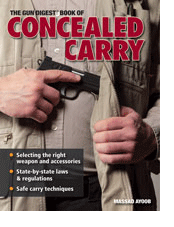 The Gun Digest Book of Concealed Carry
The Gun Digest Book of Concealed Carry
The Gun Digest Book of Combat Handgunnery
Effective Handgun Defense, A Comprehensive Guide to Concealed Carry
 AUGUSTA – A Martinez man remains in critical but stable condition after being shot during a confrontation on the 2000 block of Westfield Drive in Augusta. Authorities say 19-year-old Milo Hayes III was shot by Brete Anthony Gunby after Gunby spotted Hayes allegedly attempting to break into a neighbor's truck.
AUGUSTA – A Martinez man remains in critical but stable condition after being shot during a confrontation on the 2000 block of Westfield Drive in Augusta. Authorities say 19-year-old Milo Hayes III was shot by Brete Anthony Gunby after Gunby spotted Hayes allegedly attempting to break into a neighbor's truck.
The 39-year-old says he watched Hayes enter his neighbor's truck and that's when he called 9-1-1. He then went outside with a pistol and told Hayes to stay put until the police arrived. Hayes pulled out an object from his pockets, and that's when Gunby fired at him, according to the police report. Investigators say the shooting was self-defense.
The shooting has gotten theattention of many in the neighborhood. Mrs. Ruby Underwood says in her
eyes, Gunby is a hero. The almost 90-year-old mother and grandmother says if someone tries to come in her home uninvited she'll be ready too.
“I'd shoot up in the air a coupleof times and I might come to another window and take another shot at
them,” said Underwood. “I do have a gun and I know how to use it. I was taught how to use a gun when I was 12 years old.” Read more
Source: wrdw.com
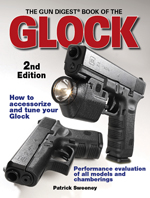 The Gun Digest Book of the Glock, 2nd Edition
The Gun Digest Book of the Glock, 2nd EditionFAIRFIELD, CA — Gunfire erupted Friday afternoon when two suspects attempted to rob a cell phone store in Fairfield and an employee with a gun opened fire in apparent self-defense, according to police.
Officers responded to a reported attempted robbery at a MetroPCS store located at 2023 N. Texas St. at around 3:15 p.m., Fairfield police said.
Witnesses told police that two black men in their early 20s entered the store and one of them pointed a handgun at two employees while the second jumped over the store counter and demanded cash.
One of the employees apparently drew a handgun and fired multiple rounds at both suspects, according to police. The two men fled and were last seen running west through an open field onto Tabor Avenue.
It has not been determined if either of the men were struck by the gunfire. Read More
Source: abclocal.go.com
Recommended gun books for those who carry concealed handguns:
 The Gun Digest Book of Concealed Carry
The Gun Digest Book of Concealed Carry
The Gun Digest Book of Combat Handgunnery
Effective Handgun Defense, A Comprehensive Guide to Concealed Carry
Find more resources at gundigeststore.com/tactical
![]() Those rifles had sat in South Korean warehouses for the last five decades, and could prove a treasure trove for military surplus retailers, collectors, and shooters.
Those rifles had sat in South Korean warehouses for the last five decades, and could prove a treasure trove for military surplus retailers, collectors, and shooters.
Recently, though, came news from South Korea that the sale of these M1’s was in a sort of bureaucratic limbo.
According to the Korea Times, “The U.S. government opposed South Korea’s bid to sell hundreds of thousands of aging U.S. combat rifles to American gun collectors…The [Ministry of National Defense] announced the plan last September as part of efforts to boost its defense budget, saying the export of the M1 Garand and carbine rifles would start by the end of 2009.”
However, “The U.S. administration put the brakes on the plan, citing ‘problems’ that could be caused by the importation of the rifles. The problems the U.S. government cited were somewhat ambiguous, said an official at the Ministry of National Defense on condition of anonymity.”
“The U.S. insisted that imports of the aging rifles could cause problems such as firearm accidents,” the official told Korea Times. “It was also worried the weapons could be smuggled to terrorists, gangs or other people with bad intentions. We’re still looking into the reason why the U.S. administration is objecting to the sale of the rifles and seeking ways to resolve the problems raised.”
Source: Source: Korea Times 8/12/10
Recommended books for gun collectors:
 Standard Catalog of Firearms, 20th Edition.
Standard Catalog of Firearms, 20th Edition.
The Official Gun Digest Book of Guns & Prices 2010, Rifles, Pistols & Shotguns